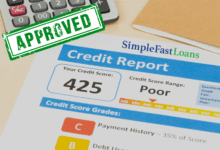Unsecured Personal Loans: A Comprehensive Guide
Unsecured personal loans offer a flexible financing option, but understanding their intricacies is crucial. This guide explores the various types of unsecured personal loans available, from traditional bank loans to online lenders, outlining their eligibility criteria, application processes, and associated costs. We’ll delve into interest rates, fees, repayment strategies, and the potential risks involved, equipping you with the knowledge to make informed borrowing decisions.
We’ll also examine alternative financing options and provide crucial advice on avoiding predatory lending practices. By the end, you’ll possess a comprehensive understanding of unsecured personal loans and be better prepared to navigate the borrowing process responsibly.
Definition and Types of Unsecured Personal Loans
Unsecured personal loans are a type of borrowing where you don’t need to offer any collateral, such as a house or car, to secure the loan. This means the lender is taking a risk based solely on your creditworthiness. Understanding the different types available and their characteristics is crucial for making an informed borrowing decision.
The fundamental characteristic of an unsecured personal loan is its reliance on your credit history and financial stability. Lenders assess your credit score, income, debt-to-income ratio, and employment history to determine your eligibility and the terms of the loan. Because there’s no collateral to fall back on, interest rates tend to be higher compared to secured loans. However, the convenience and flexibility of unsecured loans make them attractive for various purposes.
Types of Unsecured Personal Loans
Unsecured personal loans are offered through various channels, each with its own set of advantages and disadvantages. These differences often manifest in interest rates, loan amounts, and repayment terms.
Three primary sources for unsecured personal loans are banks, credit unions, and online lenders. Bank loans often come with more stringent eligibility requirements but may offer competitive interest rates for borrowers with excellent credit. Credit unions, being member-owned, may provide more personalized service and potentially lower rates, especially for members with established relationships. Online lenders frequently offer a faster and more convenient application process but may have higher interest rates and less flexible repayment options.
Examples of Appropriate Uses for Unsecured Personal Loans
Unsecured personal loans can be suitable for a variety of financial needs. For example, they can be used for debt consolidation, enabling you to combine high-interest debts into a single, lower-interest payment. They can also be utilized for home improvements, medical expenses, or unexpected emergency costs. Furthermore, funding a wedding or a vacation might be feasible with an unsecured personal loan, although careful budgeting and consideration of repayment capabilities are essential.
Comparison of Unsecured Personal Loan Types
The following table provides a general comparison. Actual rates and terms vary greatly depending on individual creditworthiness and lender policies. It’s crucial to shop around and compare offers before committing to a loan.
| Loan Type | Typical Interest Rate Range | Typical Loan Amount Range | Typical Repayment Term Range |
|---|---|---|---|
| Bank Loan | 6% – 20% | $1,000 – $50,000 | 12 – 60 months |
| Credit Union Loan | 5% – 18% | $1,000 – $30,000 | 12 – 48 months |
| Online Loan | 8% – 36% | $500 – $35,000 | 6 – 60 months |
Eligibility Criteria and Application Process
Securing an unsecured personal loan hinges on meeting specific eligibility criteria and navigating a straightforward application process. Lenders assess applicants based on their creditworthiness and ability to repay the loan. The application itself involves several steps, from initial inquiry to final loan disbursement. Understanding these aspects is crucial for a successful loan application.
Eligibility for an unsecured personal loan typically depends on several key factors. Lenders use a scoring system to assess risk, and a higher score usually translates to better loan terms. This is because lenders are taking on more risk with an unsecured loan (one not backed by collateral) than with a secured loan. Therefore, they want assurance that you will repay the loan as agreed.
Eligibility Requirements for Unsecured Personal Loans
The following factors are commonly considered by lenders when evaluating applications for unsecured personal loans. Meeting these requirements significantly increases your chances of approval and securing favorable interest rates.
- Credit Score: A good credit score (generally above 670) is essential. A higher score indicates a lower risk to the lender.
- Income and Employment History: Lenders require proof of stable income and consistent employment history to ensure you can afford the monthly repayments. This often involves providing pay stubs or tax returns.
- Debt-to-Income Ratio (DTI): Your DTI, calculated by dividing your monthly debt payments by your gross monthly income, should be relatively low. A lower DTI demonstrates your ability to manage existing debts while taking on a new loan.
- Age and Residency: Most lenders require applicants to be of a certain age (usually 18 or 21) and a resident of the country or state where they are applying for the loan.
- Existing Debt: The amount of existing debt you have can impact your eligibility. High levels of existing debt might make it harder to qualify for a new loan.
Application Process for Unsecured Personal Loans
The application process typically involves several steps. It’s important to gather all necessary documentation beforehand to streamline the process and expedite approval.
- Initial Inquiry: Begin by researching different lenders and comparing their interest rates and terms. Many lenders allow you to pre-qualify online without impacting your credit score.
- Application Submission: Once you’ve chosen a lender, complete the online or in-person application form, providing accurate information.
- Document Verification: The lender will verify the information you provided, often requiring you to upload or submit supporting documentation.
- Credit Check: A hard credit inquiry will be performed to assess your creditworthiness. This will temporarily lower your credit score but is a necessary step.
- Loan Approval or Denial: Based on your application and credit check, the lender will either approve or deny your loan application. If approved, you’ll receive details of the loan terms.
- Loan Disbursement: Once you accept the loan terms, the funds will be disbursed to your account, typically within a few business days.
Required Documentation for Unsecured Personal Loan Application
Having the necessary documentation readily available significantly speeds up the application process. Failing to provide the required documents can lead to delays or even rejection of your application.
- Government-Issued Photo Identification: Such as a driver’s license or passport.
- Proof of Income: Pay stubs, W-2 forms, tax returns, or bank statements showing regular income deposits.
- Proof of Address: Utility bills, bank statements, or rental agreements.
- Employment Verification: A letter from your employer confirming your employment status and income.
- Bank Statements: Recent bank statements showing your account activity and balances.
Interest Rates and Fees
Understanding the interest rates and fees associated with unsecured personal loans is crucial for making informed borrowing decisions. These costs significantly impact the overall expense of the loan and can vary considerably depending on several factors. Borrowers should carefully compare offers from different lenders to secure the most favorable terms.
Factors Influencing Interest Rates
Several key factors influence the interest rate a lender will offer on an unsecured personal loan. Credit score is paramount; a higher credit score generally translates to a lower interest rate because it signifies a lower risk to the lender. The loan amount also plays a role; larger loan amounts may come with higher interest rates due to increased risk. The loan term—the length of time you have to repay the loan—also impacts the rate; longer terms often result in higher interest rates to compensate the lender for the extended period of risk. Finally, the lender’s own policies and prevailing market interest rates contribute to the final rate offered. A lender’s internal risk assessment processes and current economic conditions will influence their pricing.
Common Fees Associated with Unsecured Personal Loans
Origination fees are common charges levied by lenders to cover the administrative costs of processing the loan application. These fees are typically a percentage of the loan amount and are deducted upfront. Late payment fees are penalties imposed for missed or late loan payments. These fees can range from a fixed amount to a percentage of the missed payment and add substantially to the total cost of borrowing. Prepayment penalties are sometimes charged if you repay the loan early. While less common with unsecured personal loans, it’s important to check the loan agreement. Other potential fees include insufficient funds fees (if payments are returned due to insufficient funds), and returned check fees.
Comparison of Interest Rates and Fees Across Lenders
Interest rates and fees vary significantly among different lenders. For example, a large national bank might offer lower interest rates to borrowers with excellent credit but charge higher origination fees. Conversely, a smaller online lender may offer higher interest rates but waive origination fees. Credit unions often provide competitive rates and lower fees to their members. It is essential to shop around and compare offers from multiple lenders before committing to a loan. Always review the loan agreement carefully to understand all associated costs.
Potential Total Loan Cost Based on Varying Interest Rates and Loan Terms
The table below illustrates how different interest rates and loan terms can impact the total cost of a $10,000 unsecured personal loan. Note that this is a simplified example and doesn’t include potential fees. Actual costs may vary.
| Loan Term (Years) | Annual Interest Rate (APR) | Monthly Payment | Total Repaid |
|---|---|---|---|
| 3 | 8% | $313.36 | $11,280.96 |
| 3 | 12% | $330.38 | $11,893.68 |
| 5 | 8% | $202.76 | $12,165.60 |
| 5 | 12% | $222.04 | $13,322.40 |
Repayment Options and Strategies
Understanding your repayment options and developing a robust repayment strategy is crucial for successfully managing your unsecured personal loan. Failing to do so can lead to significant financial consequences. This section outlines common repayment methods and provides practical strategies for avoiding difficulties.
Unsecured personal loans typically offer fixed repayment schedules, although some lenders may offer variable payment options under specific circumstances. A fixed payment plan involves consistent monthly payments over the loan’s term, with each payment covering a portion of the principal and interest. Variable payment options, while less common, might allow for adjustments to payment amounts based on your income fluctuations, but often come with stipulations and potential implications for your interest rate.
Fixed Payment Schedules
The most common repayment option is a fixed monthly payment schedule. This involves paying the same amount each month for the duration of the loan term. This predictability makes budgeting easier. The payment amount is calculated based on the loan amount, interest rate, and loan term. A longer loan term results in lower monthly payments but higher overall interest paid. Conversely, a shorter term means higher monthly payments but less interest paid overall. Each payment comprises a portion of the principal (the original loan amount) and interest. Early in the loan term, a larger portion goes towards interest, while towards the end, more goes towards principal.
Strategies for Effective Repayment
Effective repayment strategies are key to avoiding late payments and penalties. These strategies should be integrated into your overall financial plan.
- Budgeting: Create a detailed budget that incorporates your loan payment. This ensures you have enough funds allocated each month.
- Automatic Payments: Set up automatic payments from your checking account to ensure on-time payments and avoid late fees.
- Emergency Fund: Maintain an emergency fund to cover unexpected expenses and prevent loan payment defaults.
- Extra Payments: Whenever possible, make extra payments towards the principal to reduce the overall interest paid and shorten the loan term.
- Debt Consolidation: If managing multiple loans is challenging, consider consolidating them into a single loan with a potentially lower interest rate.
Consequences of Default
Defaulting on an unsecured personal loan has severe financial repercussions. These consequences can significantly impact your creditworthiness and future borrowing capabilities.
- Late Payment Fees: Late payments incur fees that increase the total loan cost.
- Negative Credit Report: Defaults are reported to credit bureaus, damaging your credit score and making it harder to obtain credit in the future.
- Debt Collection: Lenders may engage debt collection agencies to recover the outstanding amount, leading to further fees and potential legal action.
- Wage Garnishment: In some cases, a court may order wage garnishment, where a portion of your earnings is directly paid to the lender.
- Legal Action: Lenders can sue you to recover the debt, potentially resulting in a judgment against you and further financial penalties.
Sample Repayment Schedule
The following is a sample repayment schedule for a $10,000 loan at 10% annual interest over 36 months. Note that this is a simplified example and actual payments may vary slightly depending on the lender’s calculation methods.
| Month | Payment | Principal | Interest |
|---|---|---|---|
| 1 | $322.67 | $222.67 | $100.00 |
| 2 | $322.67 | $224.61 | $98.06 |
| 3 | $322.67 | $226.56 | $96.11 |
| 36 | $322.67 | $318.48 | $4.19 |
Risks and Considerations
Securing an unsecured personal loan can offer financial flexibility, but it’s crucial to understand the inherent risks and responsibilities involved. Failing to do so can lead to significant financial strain and damage your creditworthiness. Careful planning and responsible borrowing habits are paramount to navigating the potential pitfalls.
Unsecured personal loans, while convenient, carry a higher risk profile compared to secured loans because they aren’t backed by collateral. This means that in case of default, the lender has limited recourse beyond pursuing legal action to recover the debt. This increased risk for the lender translates to higher interest rates for the borrower. Understanding these risks and the implications of default is essential before applying for this type of loan.
Potential Risks of Unsecured Personal Loans
Defaulting on an unsecured personal loan can have severe consequences. These consequences extend beyond simply owing money; they can significantly impact your financial future and credit score. A history of missed payments can make it difficult to secure future loans, rent an apartment, or even obtain certain jobs. Furthermore, the accumulation of late payment fees and potential legal actions can quickly escalate the overall debt.
Responsible Borrowing and Budgeting
Responsible borrowing involves a thorough assessment of your financial situation before applying for any loan. This includes creating a realistic budget that accounts for all income and expenses, including the loan repayment. A detailed budget helps determine the maximum loan amount you can comfortably afford without compromising your essential living expenses or other financial commitments. Careful budgeting is crucial for preventing debt accumulation and ensuring timely loan repayments. For example, if your monthly income is $3,000 and your expenses are $2,000, you might reasonably budget $500 for loan repayment without significant financial stress. However, exceeding this limit could lead to difficulties in managing repayments.
Implications of High Debt-to-Income Ratios
A high debt-to-income (DTI) ratio signifies that a substantial portion of your income is already allocated to debt repayments. Lenders closely scrutinize DTI ratios when assessing loan applications. A high DTI ratio often indicates a higher risk of default, making it harder to qualify for new loans, or resulting in higher interest rates if approved. For instance, a DTI ratio exceeding 43% is often considered high-risk by many lenders. This means that if your total monthly debt payments (including the potential new loan) exceed 43% of your gross monthly income, securing approval might be challenging, or the interest rate offered might be significantly higher.
Potential Impact on Credit Score
Your credit score is a crucial factor in determining your creditworthiness. Missing loan payments, even one, can negatively impact your credit score, making it harder and more expensive to borrow money in the future. A lower credit score can also affect your ability to secure favorable terms on other financial products, such as mortgages, car loans, or even insurance policies. For example, a drop of 100 points on your credit score could lead to a significantly higher interest rate on a future loan, costing you thousands of dollars over the loan’s term. Maintaining a good credit score is therefore crucial for managing your finances effectively.
Alternatives to Unsecured Personal Loans
Securing a personal loan can be a helpful financial tool, but it’s not always the best option. Understanding the alternatives available allows you to make a more informed decision based on your specific financial situation and needs. Exploring these alternatives can lead to better terms, lower interest rates, or more suitable repayment structures.
Several financing options exist beyond unsecured personal loans, each with its own set of advantages and disadvantages. Choosing the right one depends on your creditworthiness, the amount of money needed, and your comfort level with different types of borrowing.
Secured Loans
Secured loans require collateral, an asset you pledge to the lender as security for the loan. If you default on the loan, the lender can seize and sell the collateral to recover their losses. This collateral could be a car, house, or other valuable asset.
Advantages: Secured loans typically offer lower interest rates than unsecured loans because the lender has less risk. They often allow for larger loan amounts.
Disadvantages: You risk losing your collateral if you can’t repay the loan. The application process might be more stringent.
Credit Cards
Credit cards provide a revolving line of credit that you can use for various purchases. They offer flexibility but come with potentially high interest rates if balances aren’t paid in full each month.
Advantages: Convenience for everyday purchases and emergency expenses; building credit history (with responsible use); rewards programs offered by some cards.
Disadvantages: High interest rates if balances are carried; potential for overspending and accumulating significant debt; annual fees for some cards.
Lines of Credit
Similar to credit cards, lines of credit offer access to a predetermined amount of money that you can borrow and repay multiple times. However, lines of credit are typically secured by an asset or are offered based on your creditworthiness.
Advantages: Flexibility to borrow and repay as needed; potential for lower interest rates than credit cards, especially secured lines of credit; can help build credit (with responsible use).
Disadvantages: Interest rates can vary; potential for accumulating debt if not managed carefully; secured lines of credit risk asset seizure in case of default.
Comparison Table
The following table summarizes the key features of each financing option:
| Feature | Unsecured Personal Loan | Secured Loan | Credit Card | Line of Credit |
|---|---|---|---|---|
| Collateral Required | No | Yes | No (generally) | May or may not be required |
| Interest Rates | Moderate to High | Lower | High (if balance carried) | Variable, potentially lower than credit cards |
| Loan Amount | Variable, often smaller | Variable, often larger | Variable, often smaller | Variable, often larger |
| Flexibility | Fixed repayment schedule | Fixed repayment schedule | Revolving credit | Revolving credit |
Protecting Yourself from Predatory Lending
Securing an unsecured personal loan can be a helpful financial tool, but it’s crucial to be aware of predatory lending practices to avoid falling victim to unfair or exploitative terms. Understanding how to identify legitimate lenders and what steps to take if you suspect foul play is essential for responsible borrowing.
Examples of Predatory Lending Practices
Predatory lenders often target vulnerable individuals with deceptive tactics designed to maximize their profits at the borrower’s expense. These practices can significantly increase the cost of borrowing and make repayment extremely difficult. Common examples include excessively high interest rates far exceeding market averages, undisclosed fees, and manipulative sales techniques. For instance, a lender might advertise a low introductory rate that quickly escalates after a short period, or they might bundle unnecessary insurance products into the loan without clear disclosure. Another common tactic is the use of balloon payments, where a large final payment is significantly higher than the preceding payments, potentially leaving the borrower unable to repay. Finally, some lenders engage in abusive collection practices, including repeated harassing phone calls and threats.
Identifying Legitimate Lenders
Choosing a reputable lender is paramount to avoiding predatory practices. Legitimate lenders operate with transparency, providing clear and concise information about loan terms, fees, and repayment schedules. They will readily answer your questions and provide detailed documentation. Look for lenders licensed and regulated by the appropriate authorities in your jurisdiction. Checking online reviews and ratings from independent sources can also provide valuable insights into a lender’s reputation and customer service. Consider comparing offers from multiple lenders to ensure you are getting the best possible terms. Avoid lenders who pressure you into making a quick decision or who are unwilling to provide detailed information about the loan.
Steps to Take if You Believe You Are a Victim of Predatory Lending
If you suspect you’ve been a victim of predatory lending, take immediate action. First, gather all relevant documentation, including your loan agreement, payment history, and any communication with the lender. Then, contact your state’s attorney general’s office or consumer protection agency. These agencies are equipped to investigate complaints of predatory lending and can provide guidance and support. Consider consulting with a consumer credit counselor or attorney specializing in consumer finance issues. They can help you understand your rights and options, including potentially negotiating a better repayment plan or pursuing legal action. Finally, document all interactions with the lender, including dates, times, and the content of communications.
Questions to Ask Potential Lenders Before Borrowing
Before committing to a personal loan, thoroughly investigate the lender and the terms of the loan agreement. Asking the right questions can help you avoid predatory practices. What is the Annual Percentage Rate (APR), including all fees and charges? What are the total fees associated with the loan, and how are they calculated? What is the repayment schedule, including the number of payments and their amounts? What happens if I miss a payment? What is the lender’s policy on late payments and fees? What are the lender’s licensing and registration details? Is there a prepayment penalty? What is the lender’s complaint resolution process? Obtain a copy of the loan agreement in writing before signing, and read it carefully before proceeding. Do not hesitate to seek clarification on any aspect of the agreement you do not understand.
Final Review
Securing an unsecured personal loan requires careful consideration of your financial situation and the terms offered by different lenders. By understanding the various loan types, eligibility requirements, and potential risks, you can make a well-informed decision that aligns with your financial goals. Remember to always compare offers, read the fine print, and borrow responsibly to avoid overwhelming debt.





